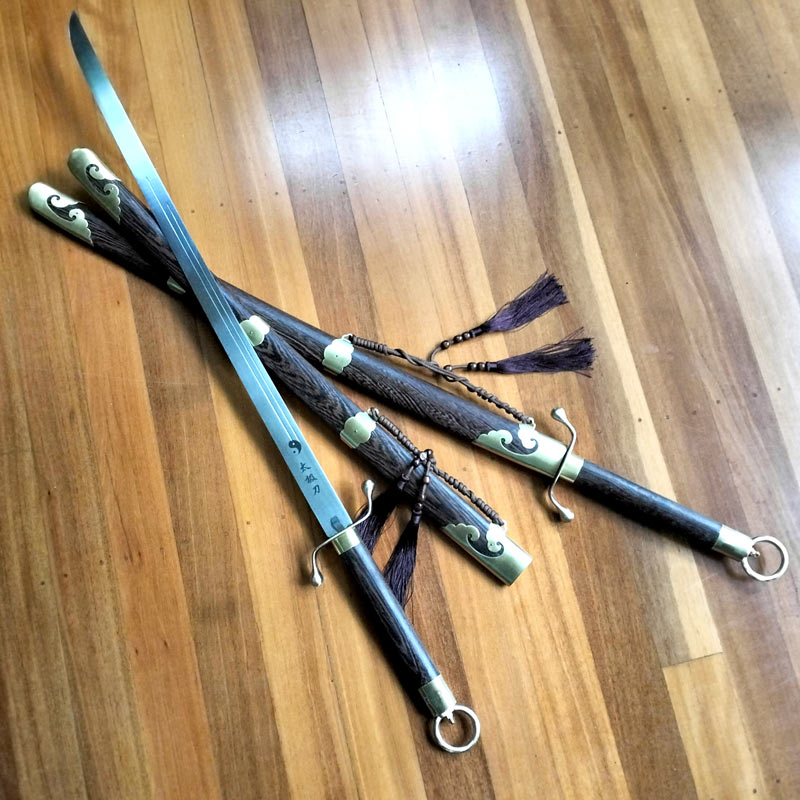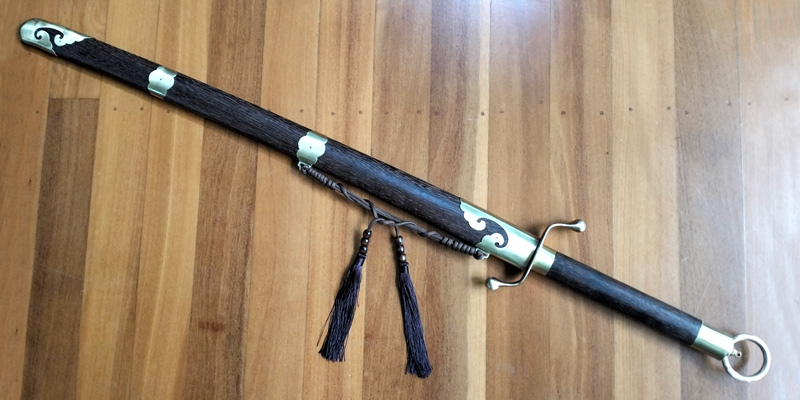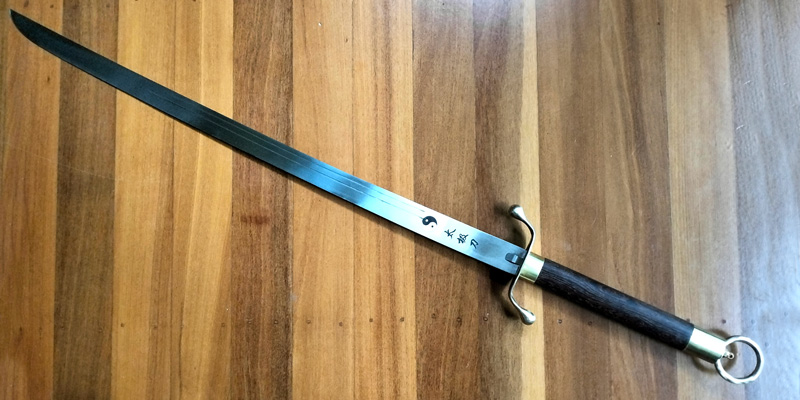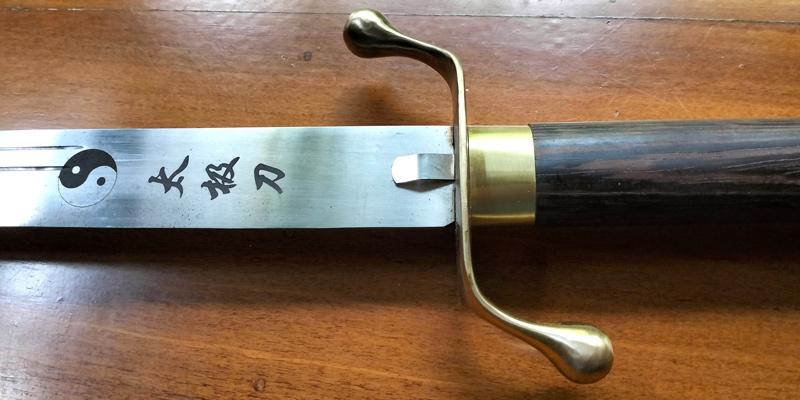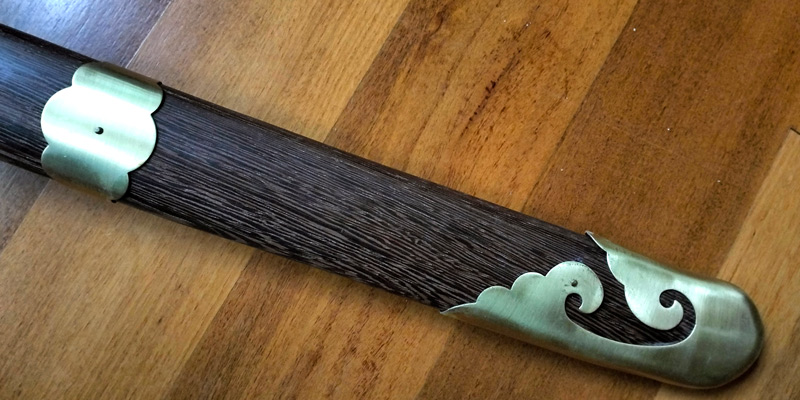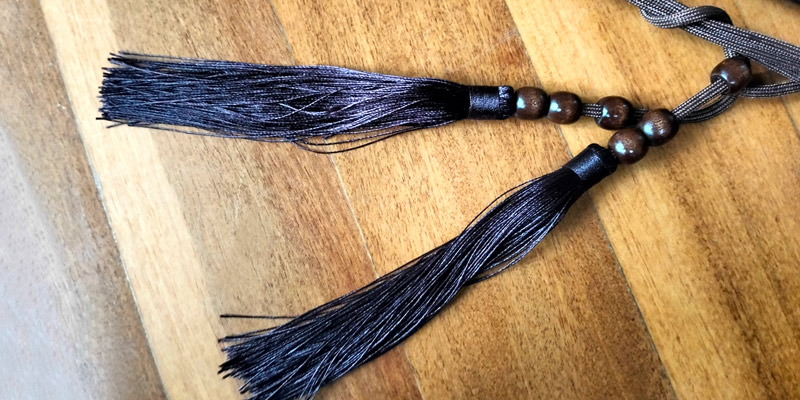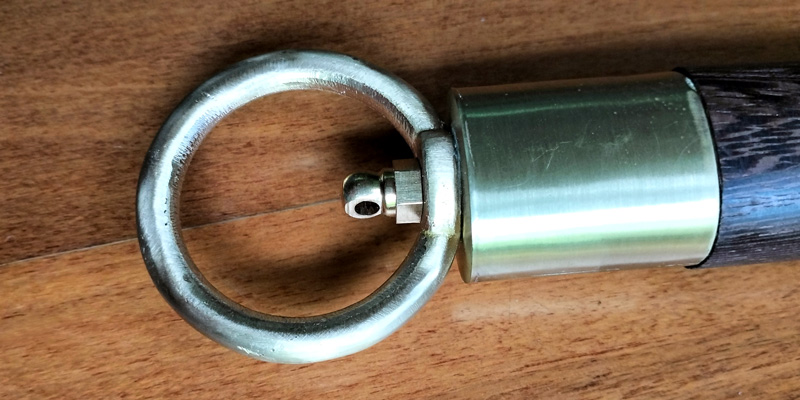Traditional Yang Style Taiji Dao (Sabre or Broadsword)
| Qty: | Add to cart |
- High quality, hand-crafted sword that is a delight to use
- Stainless Steel blade in the traditional Yang Family style
- Extremely well-balanced for magnificent feel
- The traditional S-shaped guard is designed for easy turning and control
- Scabbard and handle crafted from Jichimu (Pheasant Tail Wood)
- Guard, butt, pommel ring and trims on the scabbard are made of solid brass
- The Blade features the Taiji symbol and the words “Taiji Dao”
- Sash holding nut on butt if sashes are desired
- Beautiful hand-tied, dark brown tassel on the scabbard
- This Dao was specifically designed to enhance your movements and develop good energetics and sticking power
You must be over 18 to purchase any weapon or knife product.Weapons are subject to purchase and ownership conditions which will vary according to State Laws. Currently, most Australian states do not require a permit for sword purchase and ownership however in Victoria you need to comply with the Control of Weapons Act 1990. For more information please contact the Police Department in your State or Territory.
For all Victorian and South Australian purchases, you must provide us with a copy of your weapons permit/license and your current drivers license. These can be emailed to us at info@jinli.com.au. Failure to supply the necessary documentation will result in cancellation of your order. In the event of order cancellation, Jinli Wushu-Tai Chi Pty Ltd reserves the right to withhold any and all Paypal transaction charges associated with your order prior to issuing a refund.
More About Traditional Taiji Dao (Sabre or Broadsword)
The Chinese Broadsword or Sabre is known as a "Dāo" and is third in the pantheon of Chinese martial arts weapons with the title "Marshal of all Weapons." It was said that “The Dao is like a ferocious tiger while the jian (straight sword) is like a flying phoenix”. The name "Dāo" technically refers to any curved, single-bladed sword or knife primarily used for slashing and chopping.
The earliest Dao were made of stone, but were eventually manufactured in metal starting with bronze, then iron and eventually steel through the successive industrial periods of history. Each advance in metallurgy improved the quality of the Dao and therefore, the potential technique of the user. It was a fundamental weapon on the battlefield and in the martial arts, particularly as it was more accessible to the general population, requiring less refined skills than the double-edged sword. Its usage was concentrated on hard blocks and strikes, delivered with speed, strength and courage. However, in modern times, the Dao practice in martial arts has turned to that of sport rather than warfare and as such, the weapon has become lighter and lighter, enabling faster and more dramatic movements.
There are many, many types of Chinese Broadsword, from sleek, heavily curved slashing blades to wide chopping blades; long-handled to short; finely tapered to dramatically curved; s-shaped to cup-shaped guards; straight to downward-curved grips.
However, the Traditional Yang Family Dao has what is known as a willow-leaf blade, with the blade being relatively straight, tapering to a softly curved tip. This specific design ensures strength and flow for parrying. An S-shaped guard and rigid pommel ring provide good manoeuvrability and the option to use two hands in combat if required. It is said that once the Yang Family started to become well-known for their Taijiquan, they went on to create their own style of Dao to complement their specific skills and techniques. In using the Dao it should follow the 10 Important Points of Practice but the most critical concept is that the whole body moves the Dao, not just the hand.
The Traditional Yang Family Dao techniques were passed down through the family to Yang Cheng Fu who consolidated them into 13 movements with a description written in poem form of seven characters per line. The idea was that the verse should be thought about as the technique is performed. The “Song” is quite beautiful and follows here from a book published by Chen Yanlin (June 1943) and translated by Paul Brennan in November 2012.
太極刀名稱歌
SONG OF POSTURE NAMES FOR TAIJI SABER
七星跨虎意氣揚
BIG DIPPER POSTURE in a sitting tiger stance rouses mind and energy.
白鶴涼翅暗退藏
WHITE CRANE COOLS ITS WINGS involves a subtle retreat.
風捲荷花隱葉底
WIND ROLLS UP THE LOTUS LEAVES conceals under a leaf.
推窗望月偏身長
PUSH OPEN THE WINDOW TO GAZE AT THE MOON lengthens your torso.
左顧右盼兩分張
LOOK LEFT & RIGHT, expanding to both sides.
玉女穿梭應八方
MAIDEN SENDS THE SHUTTLE THROUGH deals with all directions.
獅子盤球向前滾
LION TURNS THE BALL rolls forward.
開山巨蟒轉身行
OPEN THE MOUNTAIN and HUGE PYTHON turns your body around.
左右高低蝶戀花
Going left and right, high and low, the BUTTERFLY LOVES THE FLOWERS.
轉身捛撩如風車
Turn around, ROLLING and RAISING are like windmills.
二起腿來打虎勢
DOUBLE KICK, then perform FIGHTING TIGER POSTURE.
鴛鴦腿發半身斜
MANDARIN DUCK KICK expresses with your body at an angle.
順水推舟鞭作篙
GOING WITH THE CURRENT TO PUSH THE BOAT, use your iron staff like a punting-pole.
翻身分手龍門跳
Turn around, spread your hands, then LEAP THE DRAGON GATE.
力劈華山抱刀勢
FORCEFUL CHOP THROUGH MT. HUA, then EMBRACE THE SABER.
六和攜石鳳囘巢
BIAN HE CARRIES THE STONE, then the PHOENIX RETURNS TO ITS NEST.
